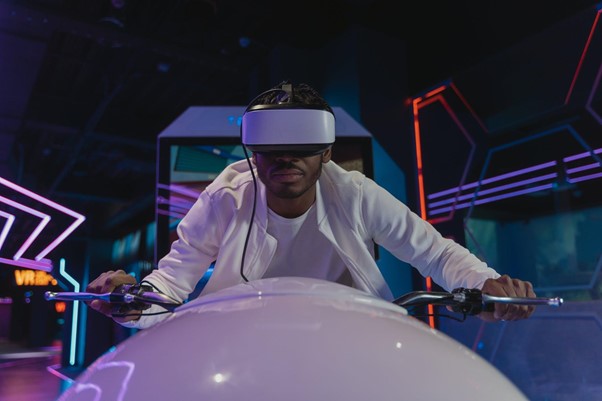Estimated reading time: 5 minutes
What is game immersion?
How can you tell whether you’re fully engrossed in a game? There are several apparent indicators: time passes without notice; you become ignorant of events or people around you; your heart rate quickens in frightening or exciting passages; you empathise with the characters. But, while we can list the signs and symptoms, what are the root causes? Why is it that so many games get it wrong?
While we’re often told that gamers are drooling, passive consumers of digital entertainment, the truth is that we’re incredibly imaginative and dynamic – we have to be to get the most out of digital worlds that can only hint at the intensity of real-life events. Through slight human hints, the best games assist us in developing immersive gaming emotional reactions. An excellent example is believable interactions with other characters.
Characters react realistically to your presence in some of the most immersive video games – the muttering scientists in Half-Life, the nuanced conversations in Mass Effect, Yorda taking your hand in Ico – often, the hints are slight. Still, they draw us into the game because we recognise them from our own emotional lives. Of course, it’s not rocket science to believe that we bring a lot of ourselves and our behaviours into games, but it’s fascinating to realise how much our imagination influences what we do and feel.
We lose ourselves in games, yet our personalities impact how we act and respond to them; we also lose track of time, but after a while, we seem to remember how long we’ve been playing. I’m pretty sure I do it, but I believe it’s the game’s structure that starts to give us hints about how long the session will last.
When it comes to video game immersion, everyone is different. Some players are more easily enticed by attractive graphics. Others are absorbed in a realistic game environment. What constitutes immersive gaming is determined by your unique preferences in games.

The future
Virtual reality isn’t a new face on the gaming scene. Users enjoy VR-based gaming exercises as popular immersive games for all user levels take over the living rooms of a new digitally connected populace. Virtual reality is a game-changer for a severe gaming addict, whether you’re searching for family fun or a genuinely immersive experience like you’ve never had before. Experts estimate that the AR and VR market will expand to $209 billion by 2022, with gaming accounting for $22 billion of that total. There are currently over 171 million Virtual Reality users globally, with that number expected to rise as consoles get more adaptive.
Virtual Reality (VR) is a computerised technology that projects a real, three-dimensional world for a fully immersive experience. The headset and biosensors allow users to make real-time motions within the platform and interact with their environment, giving them the sensation of being in their own gaming universe. The most popular VR gaming systems currently consist of low-cost headgear and a motion tracking glove that link to your favourite console or PC.
Despite their incredible graphics, the current Oculus and Vive headsets are still a financial barrier due to their lack of compatibility with various systems. Both games have lost popularity with casual gamers because they require high-end machines to function correctly. With affordability, adaptability, and a lack of high-end visuals now limiting the adoption of VR and AR, it’s time to consider a fresh timeframe for the future of these gaming systems, as well as what developers must do to keep them relevant.
Unfortunately for creators, affordability isn’t the only challenge confronting the immersive gaming industry. When it comes to the future of these headset designs, new consumers are increasingly interested in both simplicities of use and portability. Instead, developers are attempting to make the gear less bulky and distracting, following in the footsteps of AR, which is building its technology to look like conventional spectacles and behave like them, protecting users from tech-related eye strain. The new Oculus Go is only the beginning of a more streamlined VR gaming future.
For the tech-savvy, being immersed in an immersive fantasy country may appear to be a string of new unlimited possibilities, but others of us still like basic platform games. Although there are still some bugs in VR (motion sickness, headaches, and cost), the fact that the biggest brands in the gaming industry are all moving in that direction says a lot. Virtual reality has enticed gamers for decades with the promise of a totally immersive experience. However, technology has yet to fulfil this promise.
People seek out events of VR games with their friends, coworkers, and dates, treating otherwise-isolating technology the way bowling halls and ropes courses were handled by previous generations. Players are enthralled when VR incorporates embodied features, such as the ability to feel real-world objects with your hands or walk in a game instead of using a joystick. If the game industry’s current trends and forecasts tell us anything about ourselves, it’s that our desire to disconnect is vastly outweighed by our need to connect.
Share this content:
Discover more from TechyGeeksHome
Subscribe to get the latest posts sent to your email.
